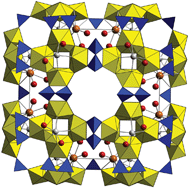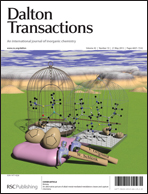The family of cage clusters built by uranyl ions bridged through bidentate peroxide groups has been expanded by incorporation of 1-hydroxyethane-1,1-diphosphonic (etidronic) acid ligands. Six cage clusters containing from 16 to 64 uranyl ions, as well as from eight to 32 etidronic acid ligands have been synthesized and characterized. Incorporation of etidronic acid ligands introduces both new cluster topologies and organic functional groups to this class of nanoscale materials. The anionic clusters were crystallized from aqueous solution under ambient conditions for structural characterization, with the resulting cluster size and polyhedral connectivity influenced by the presence of Li, Na and/or K counter ions. The association of these counter ions with four and five membered rings of edge-sharing uranyl hexagonal bipyramids, such that they are coordinated by the O atoms of uranyl ions, is at times notably either consistent or inconsistent with local energetics predicted by density functional theory in earlier studies.

You have access to this article
 Please wait while we load your content...
Something went wrong. Try again?
Please wait while we load your content...
Something went wrong. Try again?


 Please wait while we load your content...
Please wait while we load your content...